Sensor for seam tracking iST ARC
Makes every weld seam a precision weld seam
Welding robots and welding machines must work efficiently. Every weld seam must be precise, faulty weld seams are not allowed. It must be possible to compensate for any minor deviations on the component using the right technology. Intelligent torch guidance, such as with the iST ARC (iSENSE TRACK ARC) seam tracking sensors from ABICOR BINZEL, has long since become indispensable.
The iST ARC sensors for weld seam tracking easily detect deviations in the workpiece joint from a minimum gap width of 0.1 mm and adjust the path in real time. Use this type of sensor to reduce your reject rate and rework costs in automated MIG/MAG welding and TIG welding of all common metals such as stainless steel and stainless steel alloys, aluminum and other metals. The sensor is suitable for various joining processes such as arc welding, laser welding and submerged arc welding.

iST ARC in detail
All iST ARC seam tracking sensors work according to the principle of laser triangulation. This is as follows:
From the sensor head a laser line is projected onto the workpiece. The camera in the sensor then views this laser line. The sensor algorithms then analyse the position and shape of the laser line in the camera image. That way, the position and condition of the joint is measured. The robot controller or welding machine receives this information and corrects the welding if needed.
Sophisticated solutions such as Automatic Gain Control, Graphical Interactive Operator Device (GIO) and offline recording, as described below, significantly simplify the setup and operation of the system. The maintenance-friendly design of the protective glass minimises downtimes.
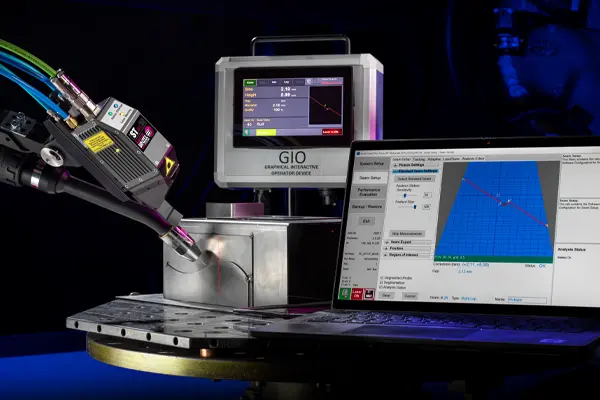
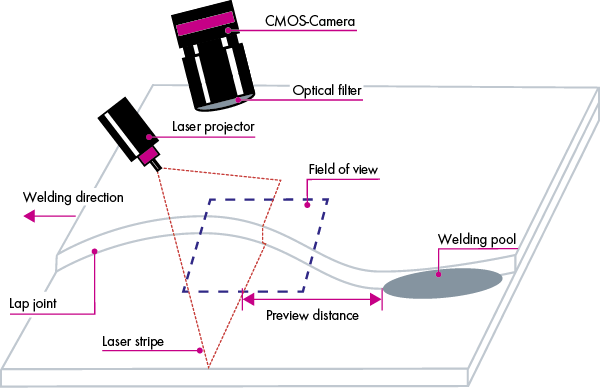
Image processing in the sensor head
The complete image processing system of the iST ARC seam tracking sensors is integrated into the sensor head. This solution eliminates the need for an additional process computer and thus saves space in the robot cell. You also have the advantage that the interface and communication of the iST ARC between the sensor head and the robot – the so-called breakout board – can be easily integrated into the control cabinet. The lower weight also has a positive effect on the volume of the delivery and therefore the freight costs.
One cable for power supply & data
The power supply to the sensor head and the data connection to and from the sensor head to the breakout board run via a single connection cable. This reduces additional interfaces and therefore further sources of failure in your automated applications.
Easy operation with Graphical Interactive Operator display (GIO)
An interesting and practical option for the iST ARC is the optional Graphical Interactive Operator display (GIO). With this compact and robust unit, the operator or maintenance engineer can see exactly what the system is doing and if necessary record this for offline analysis without the need to stop the cell to connect your laptop computer.
Automatic adjustment of the seam parameters
The Automatic Gain Control of the iST ARC seam tracking sensors automatically adjusts the shutter time of the camera, the laser intensity and other parameters. For example, the laser intensity is automatically reduced in the event of overexposure. This feature makes it easier to set up the seam parameters and avoid sub-optimal parameterisation.
Simple maintenance/repair
The design of the sensor head of all iST ARC allows you to carry out convenient maintenance, such as replacing the anti-spatter protection, without having to send the sensor in. In the event of a failure, get in touch with your local ABCIOR BINZEL contact person, who can quickly and easily replace the sensor on site. A dovetail mounting plate allows the sensor head to be changed easily without tools.
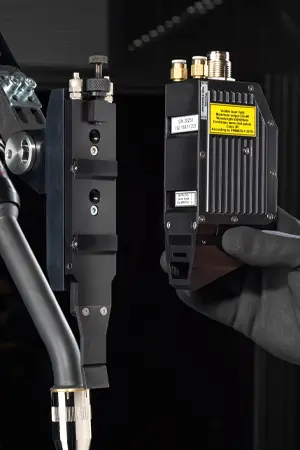
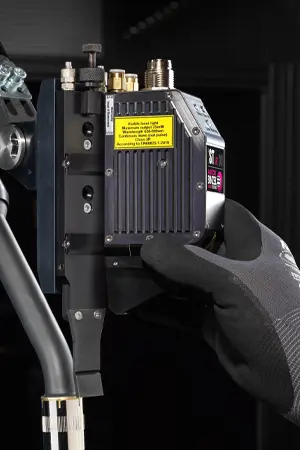
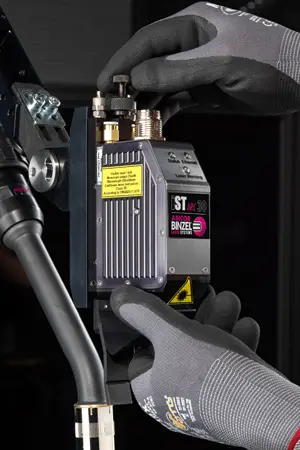
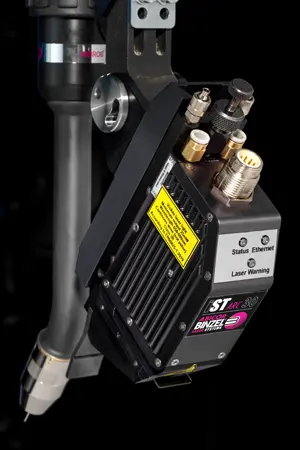
Offline optimisation for service issues
If you have any questions about how you can improve the performance of your iST ARC sensor in your specific application, use the quick and easy offline optimisation option. To do this, send your recorded weld seam information from your automated applications directly to us via e-mail at: seam-tracking@binzel-abicor.com . We will check the data, optimise it and return the optimised parameter set to you. Long downtimes of your seam tracking sensor or expensive on-site visits are minimised.
The sensor types
All 3 sensor types for tracking the weld seam offer excellent tracking performance. If required, the sensor software can provide the robot controller with information about the seam characteristics such as surface, volume and angle and enables adaptive adjustment of the welding parameters. The iST ARC is available in three versions with different fields of view and resolutions:

The iST ARC 15 with a 15 mm horizontal field of view and high resolution is suitable for seam tracking of narrow gaps, especially in thin sheet applications.
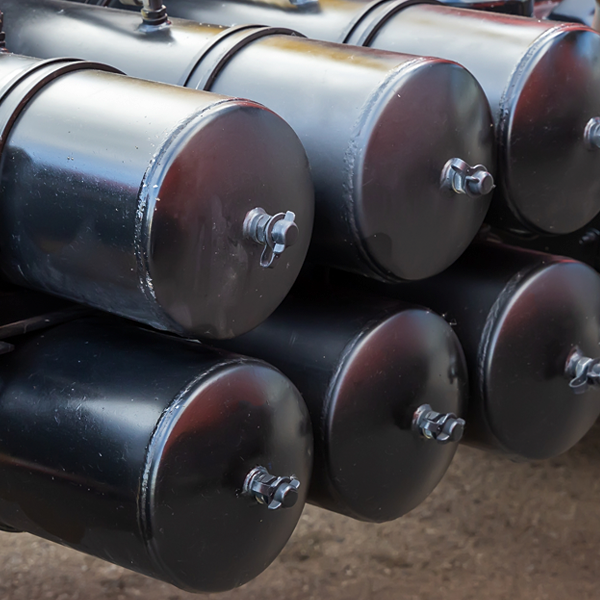
With its 30 mm horizontal field of view, the iST ARC 30 offers a perfect solution for applications where field of view and resolution are required.
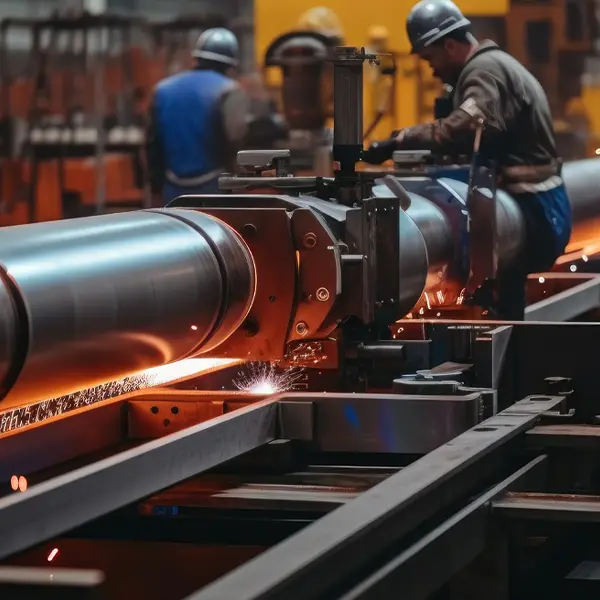
The iST ARC 50 with 50 mm horizontal field of view is ideal for thick plate welding and multi-pass welding due to its large field of view and high flexibility in the seam detection algorithms.
What can happen during robotic welding?
Everyone knows the situation: components are inspected after welding and often weld seams are found to be off position or of poor quality. The cause: poorly jigged parts or problems with parts that were not prepared correctly. These defects cannot be compensated for in the welding process because the robot follows its programmed path, resulting in rework or, in the worst case, rejects being produced.
With a sensor for weld seam guidance, rejects or expensive reworking can be avoided from the outset. Such a sensor also increases the quality of the weld seams, as even minor deviations on the component are recognised directly and compensated for in real time. Because the sensor ensures that the weld seam is correctly positioned, the welding speed can usually be increased, without wasting time and material on excessively large weld seams.
How to prevent weld seam defects
The simplest solution would be precisely prefabricated components within all tolerances and high-precision clamping fixtures. But this is impractical. With machine or robot-controlled welding, the welding torch can be kept correctly positioned by using a seam tracking sensor. The sensor provides the welding robot with data on the actual position of the joint to be welded and welding takes place exactly there. Thermal distortion during the welding process or deviations from component preparation are compensated for. The weld seam size can also be measured, allowing the robot controller to adapt the welding process.
Which welded joints must seam tracking systems be able to track?
In sheet metal welding, optical seam tracking systems must be able to recognise and track different seam types – as mentioned below. The sensors in the iST ARC family have a broad portfolio of seam patterns as standard. The software allows the addition of customised seam patterns if required. Which is perfect because the applications are usually very specific.

